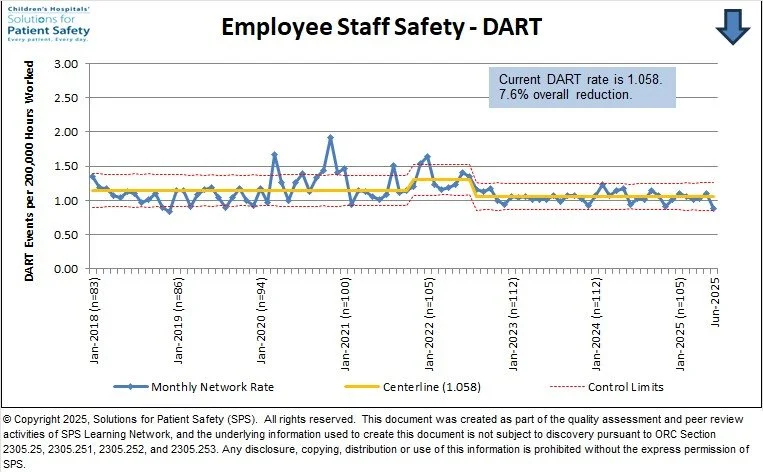
Employee/Staff Safety
SPS recognizes the critical need to address Employee/Staff Safety (ESS) in children’s hospitals and commits to advancing employee harm prevention as part of the Network’s improvement portfolio.
SPS has learned a great deal about reducing serious employee/staff harm in children’s hospitals since its ESS portfolio launched in 2016. Fundamental to that learning, the ESS improvement theory unequivocally asserts that reducing serious employee/staff harm requires steadfast support from executive and senior leadership not only in building and promoting a robust employee safety culture but also in designing hospital systems and structures that prioritize and optimize employee/staff safety.
To engage its ESS theory for improvement, SPS collaborates with network hospitals’ executives and board members, ESS subject matter experts, human resource and occupational health leaders, frontline staff members who are experts in their everyday work, and professionals from other industries skilled in organizational safety culture change. By maintaining robust connections to key partner groups and offering engagement opportunities to address evolving employee safety needs, SPS aims to support network hospitals in creating and maintaining safety cultures intolerant of employee/staff harm, including harm stemming from:
Patient Behavioral Events
Overexertion
Slips, Trips, and Falls
While building strong employee safety cultures, SPS dedicates Network efforts toward testing tailored, innovative ways to reduce specific employee harm types through improvement cohorts and spread strategies. As the Network’s employee/staff safety efforts are still in their testing phases, any recommendations, resources, and learning events have not yet been made publicly available.
For Network participants only
Patient Behavioral Events
Employee or staff harm that results from a patient behavioral event regardless of patient intention, including physical and emotional/psychological injury.
Overexertion
Employee or staff harm that results from lifting heavy items, bending, reaching overhead, pushing and pulling heavy loads, working in awkward body postures, or performing the same or similar tasks repetitively.
Slips, Trips, and Falls
Employee or staff harm that results from a sliding motion where the foot loses traction with the walking surface, a loss of balance when the natural movement of the foot is interfered with momentarily, and/or a sudden, unintentional change in position causing an individual to land at a lower level, on an object, or on the ground or other surface.

